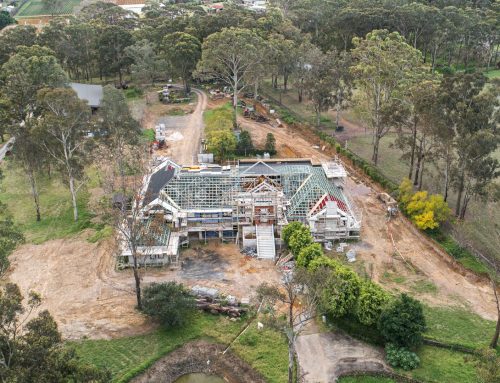Choosing the right expert for your construction or renovation venture is a pivotal decision that significantly influences the realisation of your vision. Building designers, architects, and draftsmen each play a vital role in the construction and design field, possessing distinct skills and areas of expertise. Understanding the unique contributions and differences among these professionals is key to making a well-informed decision that aligns with the needs and goals of your project.
Unravelling the Dynamics of Building Design: Profiling Building Designers, Architects, and Draftsmen
Building Designer: A building designer is a professional dedicated to the design of buildings, with a focus on both aesthetic appeal and functionality, particularly in residential and smaller commercial spaces. These professionals are not only involved in the creation of custom designs in line with client preferences and budgets but also play a crucial role in ensuring that these projects comply with relevant regulations. Building designers are instrumental in guiding clients through the process of obtaining necessary council approvals, ensuring that the project adheres to all local compliance requirements. While their primary focus is on design, their expertise in structural engineering may not be as extensive as that of architects.
Architect: Architects are licensed professionals with comprehensive training in designing and overseeing building construction. Their role involves creating detailed building designs encompassing aesthetics, functionality, sustainability, and safety. In managing the entire construction process, architects ensure that every phase, from the initial design to the final construction, complies with strict building codes and regulations. Their expertise is particularly valuable in handling complex, large-scale projects, including commercial buildings and public spaces.
Draftsman (or Draftsperson): Alternatively, a draughtsman or architectural draftsman specialises in producing detailed technical drawings based on the designs from architects or building designers. Using computer-aided design (CAD) software, they meticulously create architectural drawings that include floor plans, elevations, and construction details. Essential in translating design ideas into practical, buildable plans, draftsmen focus on the technical aspects of a project. However, their role is generally confined to drafting and does not extend to the broader aspects of design and project management.
The Difference Between The Job Descriptions Of A Building Designer, Architects And Draftspeople?
Building Designer: A Creative Solution Provider
Role Description:
A building designer is a professional focused on crafting both functional and visually attractive buildings. They typically collaborate closely with homeowners or clients, specialising in tailored designs for residential homes or smaller commercial buildings.
Primary Responsibilities:
- Design Focus: Emphasis on aesthetic and functional aspects of a project, proficient in space planning, interior design, and achieving visual appeal, all while considering the client’s preferences and budget constraints.
- Drafting Skills: Using computer-aided design (CAD) tools to produce precise drawings and plans, essential for conveying design ideas to builders and contractors.
- Compliance with Regulations: Knowledgeable about local building codes and regulations, ensuring designs comply with legal standards.
Benefits:
- Often more budget-friendly compared to architects.
- Offers personalised design solutions catering to specific client needs and financial plans.
- Suitable for smaller-scale residential or commercial projects where an architect’s full services aren’t necessary.
Considerations:
- May lack the extensive training and expertise in structural engineering that architects possess
Architect: A Connoisseur of Design and Functionality
Role Description:
Architects are licensed professionals adept at creating comprehensive building designs, managing construction, and ensuring structures meet safety and regulatory standards.
Key Responsibilities:
- Design Leadership: Responsible for the overall building concept, considering aesthetics, functionality, sustainability, and client objectives.
- Project Management: Handles all aspects of construction, including budget, contractor coordination, and ensuring adherence to design plans.
- Adherence to Codes: Profound understanding of building codes and regulations to guarantee legal compliance.
Benefits:
- Highly trained with expertise in both design and construction management.
- Capable of managing complex, large-scale projects, including commercial and public buildings.
- Offers sustainable and eco-friendly design options.
Considerations:
- Hiring an architect may incur higher costs due to their extensive education and experience.
Draftsman: The Precision Expert
Role Description:
A draftsman, also known as a draughtsman or architectural draftsman, excels in creating detailed technical drawings based on the visions of architects or designers.
Primary Responsibilities:
- Technical Drafting: Utilizes CAD software for precise architectural drawings, encompassing floor plans, elevations, and detailed construction plans.
- Collaborative Role: Works in tandem with architects, building designers, and engineers to turn conceptual designs into detailed, executable plans.
- Focus on Accuracy: Concentrates on technical details, ensuring all aspects of the design are accurately depicted in drawings.
Benefits:
- Integral in turning design concepts into viable construction plans.
- More affordable than architects, contributing significantly to the design and building process.
Considerations:
- Typically, it does not offer design or project management services and might lack comprehensive knowledge of building codes and regulations.
Choosing the Appropriate Professional for Your Project
The decision of which professional to hire for your construction or renovation project depends on factors like project scope, budget, and specific objectives. Here are some guidelines:
- For smaller residential projects with limited budgets, a building designer or draftsman can be a cost-effective option.
- For larger commercial projects or those needing extensive design and project management, an architect is usually the preferable choice.
- Ensure the chosen professional is licensed and qualified for your region and has a proven track record in similar projects.
Importance for Potential Clients
Today, for Australians embarking on the journey of building or renovating a home, choosing the right professional is crucial. Each role – architect, draftsperson, and building designer – caters to different needs and budget levels.
An architect might be your go-to if you’re after a bespoke design, particularly for a complex or large-scale project. Their expertise in innovative and sustainable design can help you build a unique space and help you navigate the often-tricky planning permissions and regulations in Australia.
Opting for a building designer could be more cost-effective, especially for standard residential projects. That’s because building designers are well-suited for those who want a balance between customised design and affordability. This means they can design aesthetically pleasing buildings but for a lower price. Building designers in Australia are familiar with local design trends and regulations, making them a practical choice for most home-building ventures. However, they may lack the necessary skills for larger building projects.
Lastly, a draftsperson is a go-to professional if you have a clear vision of your project and need someone to draft technical plans. They are particularly useful for projects where major structural changes aren’t required but where accurate, detailed plans are needed for construction and approval purposes. In other words, you will need a draftsperson to draft the design for regulatory authorities.
Your choice will influence your space’s design and functionality and the construction process’s efficiency and ease. Understanding these roles helps ensure you align the project goals with the right expertise, making your building journey a successful and enjoyable experience.
Frequently Asked Questions: Understanding Your Design and Construction Options
Do I need an architect for my project?
It depends on the scale and complexity of your project. Architects are more expensive compared to building designers or draftsmen, but they are capable of handling larger and more complex projects and can provide valuable insight and expertise in design and documentation.
Are there any legal differences between architects and building designers in Australia?
Yes, architects are legally required to be registered and licensed to practise architecture in Australia. Building designers also need to be licensed and may need to get re-licensed every year, depending on the state or territory regulations.
What type of projects can building designers undertake?
Building designers can deliver design materials and documentation for new buildings, renovations, and various types of residential and commercial projects. They can also provide insight and fulfil the design stage of larger projects.
Can a draftsman or a building designer prepare building plans for my project?
Yes, a draftsman or a building designer is capable of preparing building plans and documentation for smaller to medium-sized projects, while architects are often sought after for larger and more complex projects.
What are the main factors to consider when deciding between an architect and a building designer?
When deciding between an architect and a building designer, it’s essential to consider the scale, complexity, and specific design needs of your project. It’s also important to recognise the different qualifications and expertise each professional brings to the table.
Is there a significant cost difference between hiring an architect versus a building designer?
Yes, architects are generally more expensive than building designers due to their higher qualifications, expertise, and ability to handle larger and more complex projects. However, the cost difference may be justified based on the project requirements and desired outcomes.
Can a building designer or draftsman legally sign off on building documentation?
A licensed building designer is legally allowed to sign off on building documentation for the specific category they are licensed in. However, it’s important to verify the specific legal requirements in your state or territory.
What role does a building designer play in the design process?
Building designers are involved in the early stages of design, offering design insights, preparing documentation, and fulfilling the design requirements of a project. They work closely with clients to achieve the desired design while considering practical and regulatory aspects.




